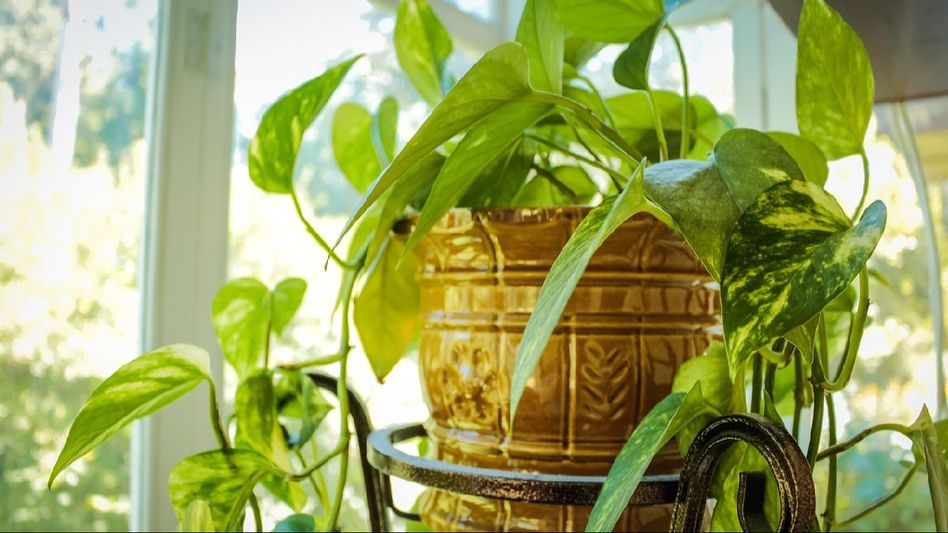Cultivating Evergreen Elegance: A Comprehensive Guide to Thriving Indoor Plants
Indoor plants have long been cherished for their ability to enhance the aesthetic appeal of our living spaces, improve air quality, and provide a sense of tranquility. However, keeping these green companions vibrant and healthy year-round requires more than just occasional watering.

Indoor plants have long been cherished for their ability to enhance the aesthetic appeal of our living spaces, improve air quality, and provide a sense of tranquility. However, keeping these green companions vibrant and healthy year-round requires more than just occasional watering.
1. Understanding Your Plant's Needs
The first step in maintaining evergreen indoor plants is understanding the specific needs of each species. Different plants have varying requirements for light, water, humidity, and soil. For example, succulents and cacti thrive in bright, direct sunlight and require minimal watering, while ferns prefer indirect light and consistently moist soil. Researching and identifying the unique needs of your plants will enable you to create the optimal conditions for their growth.
2. Optimal Lighting Conditions
Lighting is crucial for photosynthesis, the process by which plants convert light into energy. Most indoor plants flourish in bright, indirect light. Placing plants near windows where they can receive filtered sunlight is ideal. However, during the shorter days of winter, supplemental lighting might be necessary. LED grow lights are an excellent option as they provide the full spectrum of light wavelengths required for healthy growth without generating excessive heat.
3. Proper Watering Techniques
Overwatering and underwatering are common mistakes that can lead to root rot or dehydration, respectively. The key is to strike a balance by monitoring the moisture level of the soil. A general rule of thumb is to water when the top inch of soil feels dry to the touch. It's also essential to ensure that pots have adequate drainage to prevent water from accumulating at the bottom, which can suffocate roots. For plants with specific watering needs, such as orchids or bonsai, following tailored guidelines is imperative.
4. Maintaining Humidity Levels
Indoor environments, especially during winter, can be quite dry due to heating systems. Many tropical plants, such as palms and peace lilies, require higher humidity levels to thrive. Regular misting, using a humidity tray (a shallow tray filled with water and pebbles), or employing a humidifier can help maintain the necessary moisture in the air. Grouping plants together can also create a microenvironment with higher humidity.
5. Soil and Nutrient Management
Using the right type of soil is fundamental for plant health. Most indoor plants prefer a well-draining potting mix. Specialized soil mixes are available for different plant types, such as cactus mix for succulents or orchid bark for epiphytes. Regular feeding with appropriate fertilizers is also crucial. A balanced, water-soluble fertilizer applied every month during the growing season (spring and summer) can support robust growth. Organic options like compost tea or worm castings can provide additional nutrients without the risk of chemical buildup.
6. Pruning and Repotting
Pruning helps manage the shape and size of plants, encourages new growth, and removes dead or diseased foliage. Regularly inspect your plants for any yellowing leaves, which should be trimmed to direct the plant's energy towards healthy growth. Repotting is necessary when plants outgrow their containers. Typically, this should be done every 1-2 years. Choosing a slightly larger pot and refreshing the soil can provide more room for root expansion and access to fresh nutrients.
7. Pest Management
Indoor plants can attract pests like aphids, spider mites, and mealybugs. Regular inspection is crucial for early detection and control. Natural remedies such as neem oil, insecticidal soap, or introducing beneficial insects like ladybugs can be effective in managing pests. Maintaining plant health through proper care reduces the likelihood of infestations.
8. Seasonal Adjustments
Plants have different needs throughout the year. During the growing season, increased watering, feeding, and light exposure are necessary. Conversely, in the dormant period (typically winter), plants require less water and no fertilizer, and they might benefit from reduced light. Adjusting your care routine seasonally ensures that plants receive the appropriate resources for each phase of their life cycle.
Keeping indoor plants evergreen and vibrant involves a holistic approach to their care. By understanding and catering to the specific needs of each plant, providing optimal lighting, practicing proper watering techniques, maintaining adequate humidity levels, managing soil and nutrients, performing regular pruning and repotting, controlling pests, and making seasonal adjustments, you can cultivate an indoor oasis that flourishes year-round. With dedication and attention, your indoor plants will not only survive but thrive, bringing continuous beauty and vitality to your home.
Copyright©2025 Living Media India Limited. For reprint rights: Syndications Today









